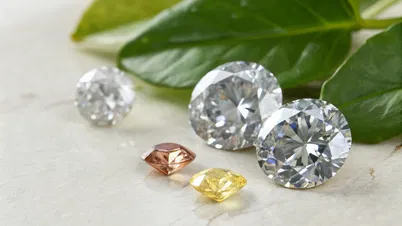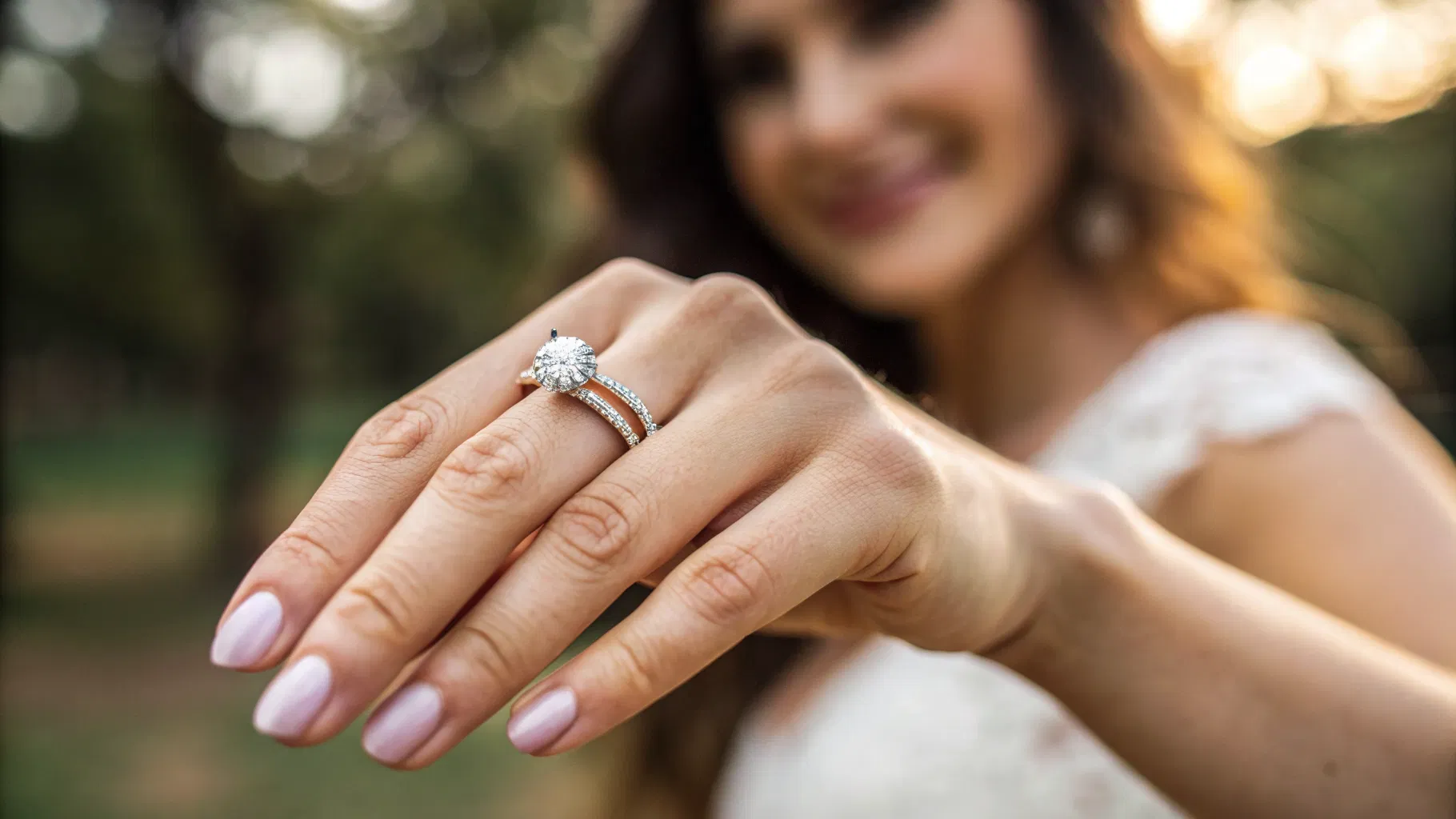
Do Lab Diamonds Turn Yellow? Understanding Color Stability and Care
Introduction
Can true luxury also be truly ethical? As consumers become increasingly conscious of the impact of their purchases, the demand for sustainable and ethically sourced jewelry has surged. Lab-grown diamonds have emerged as a revolutionary alternative to traditional mined stones, offering the same breathtaking beauty while promoting environmental responsibility. However, a lingering question often arises among potential buyers: do lab diamonds turn yellow?
In this blog post, we will explore the color stability of lab-grown diamonds, investigating the factors that may contribute to yellowing over time. We will also provide insights into the science behind diamond color, the importance of ethical sourcing, and how our bespoke design services at DiamondsByUK allow you to create a piece that reflects your unique story. Are you dreaming of a piece of jewelry that’s as unique as your story? Join us as we delve into the captivating world of lab diamonds and discover how to maintain their brilliance for years to come.
At DiamondsByUK, we are committed to redefining luxury by making sustainable, conflict-free diamond jewelry accessible to all. Our mission encompasses not only the beauty of our pieces but also the integrity and craftsmanship behind them. With our focus on sustainability, integrity, and customer-centered practices, we strive to empower you to make informed decisions about your jewelry.
Understanding Lab-Grown Diamonds
What Are Lab-Grown Diamonds?
Lab-grown diamonds, also known as synthetic or cultured diamonds, are created using advanced technological processes that mimic the natural conditions under which diamonds form. They possess the same chemical and physical properties as mined diamonds, making them virtually indistinguishable to the naked eye.
The two primary methods of producing lab-grown diamonds are:
- High-Pressure High-Temperature (HPHT): This method simulates the extreme conditions found deep within the Earth. It involves applying high pressure and temperature to carbon, resulting in diamond formation.
- Chemical Vapor Deposition (CVD): This technique uses a gas mixture that includes carbon. Under controlled conditions, the gas is ionized, allowing carbon atoms to deposit onto a substrate, growing a diamond layer by layer.
The Diamond Grading System
Diamonds are graded based on the 4Cs: Carat, Cut, Color, and Clarity. The Gemological Institute of America (GIA) established these criteria, which are used to evaluate the quality and value of diamonds. Understanding this grading system is crucial when considering a lab-grown diamond, as it provides clarity on what to expect in terms of color stability.
- Carat: Refers to the weight of the diamond. One carat equals 200 milligrams.
- Cut: Describes how well the diamond has been shaped and faceted, which affects its brilliance.
- Color: Ranges from D (colorless) to Z (light yellow or brown), with colorless diamonds being the most sought after.
- Clarity: Measures the presence of inclusions or blemishes in the diamond.
When purchasing lab-grown diamonds, it's essential to choose stones that are IGI-certified to ensure their quality and authenticity. At DiamondsByUK, we specialize in IGI-certified lab-grown diamonds, providing you with peace of mind regarding your investment.
Do Lab Diamonds Turn Yellow?
The Science Behind Diamond Color
Color in diamonds arises from trace impurities present during their formation. Nitrogen, for instance, is a common impurity that can impart a yellow hue to diamonds. The concentration of nitrogen and other trace elements can significantly affect the final appearance of the diamond.
Factors Contributing to Yellowing
- Nitrogen Impurities: During the growth process, nitrogen atoms can replace carbon atoms in the diamond lattice, leading to a permanent yellow hue. This yellowing typically occurs gradually over several years.
- High Temperatures: Subjecting lab diamonds to high temperatures, such as during jewelry repairs, can temporarily cause yellowing. However, this color change is reversible once the diamond cools.
- Crystal Structure Defects: Defects in the crystal structure, such as vacancies or interstitials, can also lead to yellowing or browning. These defects may occur during growth or as a result of post-growth treatments. Depending on the severity, the resulting color changes can be permanent.
- Exposure to UV Radiation: Prolonged exposure to UV light can lead to color changes in some diamonds, including lab-grown ones. However, this process is typically gradual and can often be reversed.
Can Lab Diamonds Change Color Over Time?
In general, lab diamonds do not undergo color changes as part of normal wear and tear. They are chemically identical to mined diamonds and offer equal durability and color stability. However, it is essential to take proper care of your diamond to maintain its brilliance and prevent any buildup of dirt or grime that could alter its appearance.
How to Maintain the Brilliance of Your Lab-Grown Diamond
To ensure your lab-grown diamond retains its stunning clarity and color, follow these simple care tips:
- Regular Cleaning: Clean your diamond regularly with a mild soap solution and a soft brush. This will help remove any buildup of dirt and oils that may make it appear dull or yellowish.
- Avoid Harsh Chemicals: When cleaning your jewelry, avoid using harsh chemicals or abrasive materials that could scratch the surface of the diamond.
- Professional Cleaning: For a more thorough cleaning, consider visiting a jeweler who utilizes ultrasonic cleaning methods. This can effectively restore the diamond's brilliance.
- Protect from Extreme Heat: Be cautious when exposing your diamond to high temperatures, such as during jewelry repairs. If your diamond is subjected to extreme heat, allow it to cool before wearing it again.
- Store Properly: When not wearing your jewelry, store it in a soft pouch or a separate compartment in a jewelry box to prevent scratches and damage.
The Importance of Ethical Sourcing
At DiamondsByUK, we believe that luxury should not come at the expense of ethical considerations. Our commitment to sustainability means that all our diamonds are lab-grown, ensuring they are 100% conflict-free. By choosing lab-grown diamonds, you are supporting environmentally friendly practices and contributing to a more sustainable future.
Why Choose Lab-Grown Diamonds?
- Ethical Considerations: Lab-grown diamonds are free from the ethical concerns associated with mined diamonds, such as labor exploitation and environmental degradation.
- Eco-Friendly: The production of lab-grown diamonds has a significantly lower environmental impact compared to traditional mining methods.
- Affordability: Lab-grown diamonds typically cost 20-40% less than their mined counterparts, allowing you to invest in higher quality or larger stones without breaking the bank.
- Customization: Our bespoke design services allow you to create a unique piece tailored to your preferences. From engagement rings to necklaces, we can help you design a stunning piece that reflects your individuality.
Custom Design Inquiries
We invite you to explore our Custom Design Services at DiamondsByUK. Our expert team is ready to assist you in creating a bespoke piece that tells your unique story. Whether you're envisioning an engagement ring, a necklace, or any other piece of fine jewelry, we can bring your vision to life—often with a turnaround of just 1-2 weeks.
Conclusion
In conclusion, while lab diamonds can exhibit yellowing due to various factors such as nitrogen impurities, high temperatures, and crystal structure defects, they generally maintain their color stability over time. By purchasing lab-grown diamonds from reputable sources like DiamondsByUK, you can ensure the quality and integrity of your investment.
Caring for your diamond through regular cleaning and proper storage will also help preserve its brilliance for years to come. As you consider your next jewelry purchase, remember that lab-grown diamonds offer an ethical, sustainable, and stunning alternative to traditional mined stones.
Are you ready to create a piece of jewelry that reflects your style and values? Design Your Bespoke Jewellery with DiamondsByUK and experience the beauty of ethical luxury today!
FAQ
1. Do lab diamonds turn yellow over time?
Lab diamonds can exhibit yellowing due to nitrogen impurities and other factors, but they generally maintain their color stability. Proper care and purchasing from reputable sources can help ensure lasting brilliance.
2. How can I clean my lab-grown diamond?
We recommend cleaning your diamond regularly with a mild soap solution and a soft brush. For a more thorough cleaning, consider visiting a jeweler who uses ultrasonic cleaning methods.
3. What should I do if my diamond appears yellow?
If your diamond appears yellow, it may be due to dirt or grime buildup. Regular cleaning should restore its brilliance. However, if the yellowing persists, consult a professional jeweler for advice.
4. How long does it take to create a custom design?
At DiamondsByUK, we strive to provide a quick turnaround on custom designs, typically within 1-2 weeks. Contact us to discuss your vision today!
5. Are lab-grown diamonds a good investment?
While we do not guarantee lab-grown diamonds as a financial investment, they are an ethically sourced and environmentally friendly alternative to mined diamonds, offering significant beauty and value.
Explore our selection of stunning lab-grown diamonds today and join us in redefining luxury with sustainability and craftsmanship at the forefront. Contact Us to Create Your Unique Piece!


